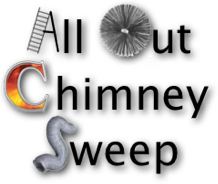Chimneys are a wonderful asset to any home. Not only do they function as a good vent for residue smoke and fumes to make sure that you enjoy all the benefits of the warmth, they also add a better level of authenticity to practically any home design. What chimneys look like tend to vary from house to house, not only on the basis of their purpose but also on the design aesthetic of a house. This is why builders often place a great emphasis to make an informed choice when it comes to chimneys to make sure that the construction works in terms of both functionality and style.
While chimneys in general are vertical and climb over the house, they exist in various varieties and styles. Here are the most common types of chimney designs available:
Quoins: Made out of stone, these chimneys are characterized by an exterior made of “quoins,” i.e. dressed stones that march up the corners. Generally, set to have the stone faces alternate in a wide-and-narrow fashion, these chimneys tend to be a favorite among those who have (or build) stone buildings, or enjoy an old and rustic aesthetic.
Clay Pots: As the name suggests, such chimneys are characterized by the presence of three clay flue pots on the roof. Serving both style and functionality to an equal degree, these pots are often placed on old chimneys when the latter have aged past their ability to function. Placing them in such a way increases the original chimney’s height, which ends up making the opening narrower and prevents smoke from leaking into the house.
Paired Chimneys: These chimneys have their origins in the old Georgian-style construction but are also popular in the modern times among those who prefer an aesthetic that looks and feels antique. Also called double interior chimneys, these have an added advantage of being able to help spread heat and warmth evenly throughout the house. These chimneys are generally located in the center of the house, where they absorb maximum warmth and radiate them throughout the house, keeping the whole place warm and cozy, especially during the cold winter months.
Metal Chimney: While the sound of a metal chimney may not sound very appealing, they tend to score very high on the functionality scale, and with some careful planning can make for a decent design addition as well. These chimneys are known for having double (or even tripled) walls – with strong insulation (and in case of tripled walls, air) between the layers. Such as design helps trap the heat from escaping into the outdoors and keep all the heat inside. For design purposes, metal chimneys are attached with sided frames, masonry or wooden panels.
Brick-and-Mortar: One of the most popular and classic chimney designs, these chimneys both work great and look fabulous. Fitting a wide range of design aesthetics, these chimneys are known for a simple construction made with the help of brick and mortar. As a general rule, the mortar used for constructing these tend to be softer than the brick. This is to make repairs convenient – for instance, if the chimney gives way, it can be easily fixed by adding mortar to the bricks, as opposed to replacing the bricks, which is a tougher both in terms of time and labor.
Play-of-Angles: Ideal for roofs that sport a range of attractive angles, these roofs are placed at an angle at the base and are capped with multiple rows of corbelling. At times, alternating colors are also added to highlight the angled theme of the construction. Though not suitable for every roof, such chimneys are a very complimentary addition to angled roofs, as they tend to balance out the aesthetic.
Prefab: Ideal for those who prefer modern style and functionality, these chimneys have been around since the 1980s and are known to use in place of masonry chimneys. As the name suggests, these chimneys come fitted with a prefab fireplace system, and when installed and maintained properly, work seamlessly for years altogether. When it comes to design, they may not offer much in terms of décor, but are subtle yet suitable in almost every type of design aesthetic.
